The Sanderling is a group of small birds in the sandpiper, or Scolopacidae, family. They breed throughout the Arctic Circle, and spend their winters along the coasts of the all the landmasses except for Antarctica.
These widespread and common birds spend their time running along sandy beaches and sandbars in search of small prey. Read on to learn about the Sanderling.
Description of the Sanderling
These birds are relatively light colored, with moderately long legs and beaks. Their backs and heads are tan or brown and mottled with darker colors, while their underbellies are white or cream colored. Both their legs and their beaks are black. They are just seven or eight inches long, and weigh an ounce or two.
Interesting Facts About the Sanderling
For such common birds, most people know very little about them. These interesting little birds have a number of different traits and behaviors that make them unique.
- Falcon Foes – One of the most dangerous predators to the Sanderling is the Peregrine falcon. When they spot a falcon, the entire flock flies together over the ocean. They clump together and all the little birds fly back and forth erratically to try and confuse the predator.
- Massive Migration – These little birds live across nearly every coastline in the world, but they only breed in the Arctic. For birds spending the winter at the tip of South America, that is a long journey back north! When they aren’t breeding yet, many Sanderlings simply stay put instead of migrating north to save their energy.
- Widespread Winter Grounds – Outside of the breeding season, these birds live across an immense range. In fact, they are one of the most widespread sandpipers, and one of the most widespread shorebirds. You can find these little birds on just about any beach or coast in the world!
- Shore Sprinters – Sanderlings are speedy little birds! Their favorite method of catching prey is running down after a wave recedes and searching for small stranded invertebrates. They race up and down the beach after each wave searching for food.
Habitat of the Sanderling
Like many shorebirds and sandpipers, Sanderlings live in different types of habitats when they are breeding and when they are vacationing for the winter. In the “off season,” these birds spend their winters on sandy beaches, lakesides, mud flats, estuaries, and tidepools.
They live in virtually every ecosystem close to the ocean, even some a little ways inland. During the breeding season, they nest in the Arctic tundra, usually near ponds or on rocky ridges.
Distribution of the Sanderling
If you’re looking for one of these birds, you probably won’t have to look very far, especially if you live near the coast! These little birds live along the coastline of virtually every landmass on earth.
During the winter, they inhabit the coasts of North, Central, and South America, as well as Eurasia, Africa, and Australasia. During the spring and summer, these birds fly north … all the way north! They breed along the Arctic Circle throughout the northern edges of Alaska, Canada, Greenland, Russia, and parts of northern Europe.
Diet of the Sanderling
These little birds feed on a wide variety of small organisms. They feed by running along the edge of the water in search of prey, and probing their beaks into sands and soft soils.
They are omnivores, which means that they eat both plants and animals. Most of their diet consists of small invertebrates, like flies, mosquitos, worms, small clams, crabs, and horseshoe crab eggs. They also feed on seeds, berries, roots, nuts, and shoots.
Sanderling and Human Interaction
Because humans spend lots of time near beaches and coasts, we interact with Sanderlings relatively frequently. Sadly, many interactions, like pollution, habitat destruction, oils spills, and improper disposal of garbage, put these little birds in danger.
Thankfully, Sanderlings are incredibly widespread and their population numbers are quite high. Because of this, human interaction does not impact them severely, and the IUCN lists them as Least Concern.
Domestication
Humans have not domesticated Sanderlings in any way.
Does the Sanderling Make a Good Pet
No, these birds do not make good pets. They are wild birds, and do not like interacting with humans. In most places, it is also illegal to capture, harm, harass, or kill a Sanderling.
Sanderling Care
These little shorebirds are common features in zoos and aquariums. Because they are so widespread, it is not unusual for a Sanderling to become injured in some way. If they cannot survive in the wild, sometimes zoos or aquariums can give them permanent homes.
Their enclosures usually contain a shallow water body, and a sandy beach for them to forage on. Many of those kept in zoos share their enclosure with several other shorebird species. Zookeepers feed these birds a variety of small fish, crabs, krill, shrimp, clams, crickets, mealworms, and more.
Behavior of the Sanderling
Sanderlings are social birds, and usually congregate in flocks. They move along the beach in search of food, and all the birds keep an eye out for predators. If one spots a predator, it alerts the rest of the flock and all the birds quickly take off into the air.
As breeding season approaches, flocks begin to converge and migrate north to their breeding grounds. They don’t migrate in specific patterns, and multiple populations mix while migrating.
Reproduction of the Sanderling
These birds utilize a variety of breeding strategies. Some individuals mate with the same partner for an entire season and both birds raise the young together. Others breed with multiple partners, and males will breed with multiple females, or females with multiple males.
Females usually lay about four eggs, and incubation lasts around three or four weeks. The chicks follow their parents soon after hatching, and the parents protect them and show them how to find food. Once they are two weeks old the chicks begin learning to fly, and are usually independent within a week or so.


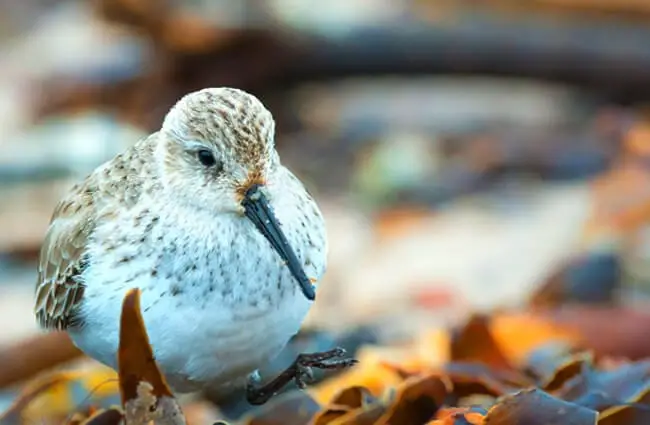
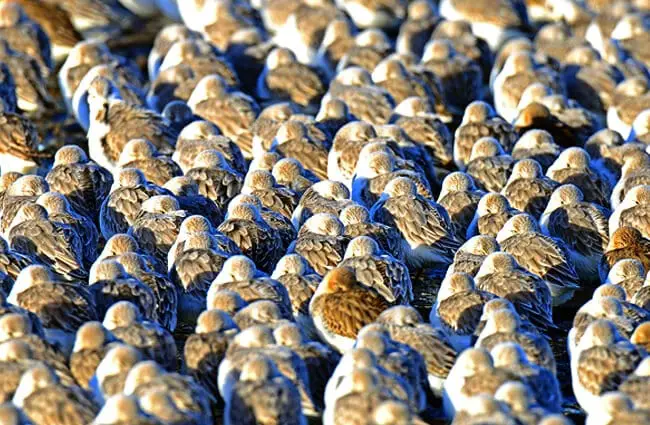

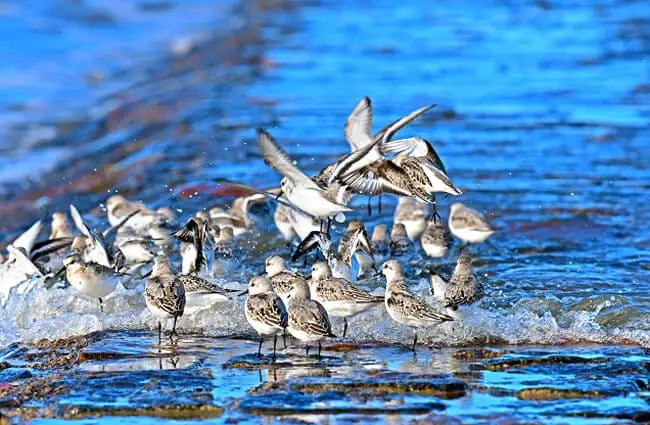
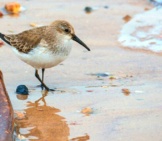
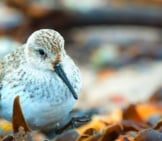
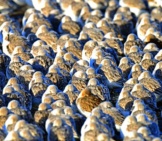
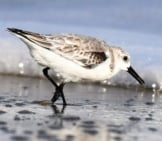
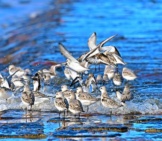
![Red Angus Closeup of a beautiful Red Angus cowPhoto by: U.S. Department of Agriculture [pubic domain]https://creativecommons.org/licenses/by/2.0/](https://animals.net/wp-content/uploads/2020/03/Red-Angus-4-238x178.jpg)












![Red Angus Closeup of a beautiful Red Angus cowPhoto by: U.S. Department of Agriculture [pubic domain]https://creativecommons.org/licenses/by/2.0/](https://animals.net/wp-content/uploads/2020/03/Red-Angus-4-100x75.jpg)

